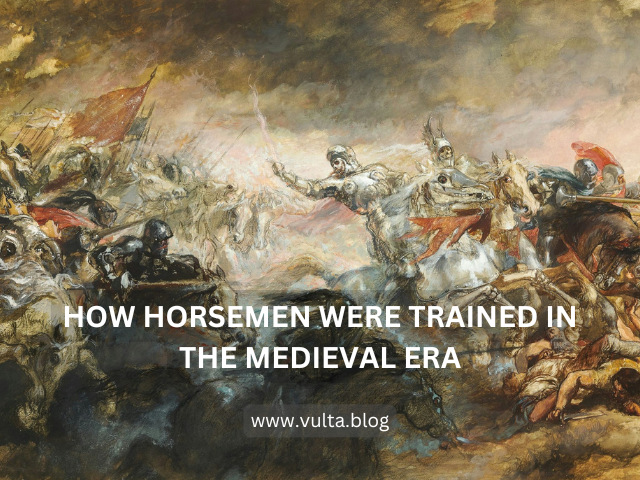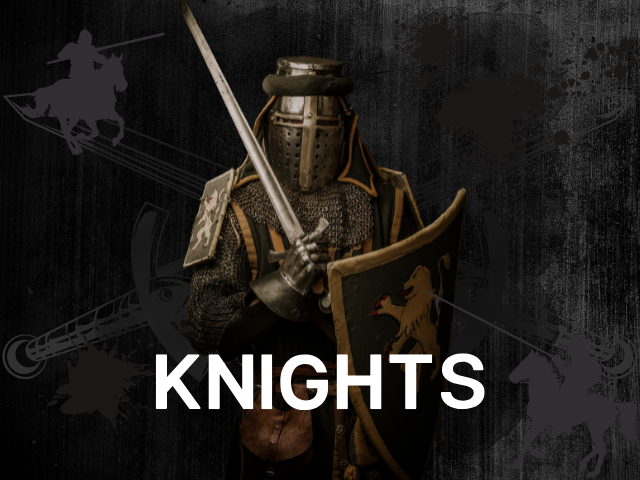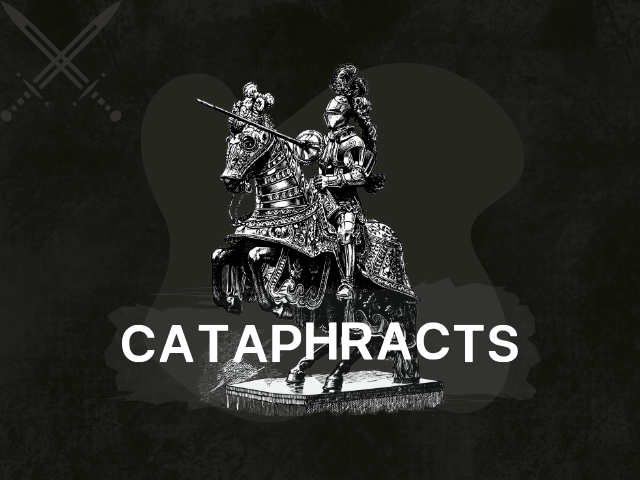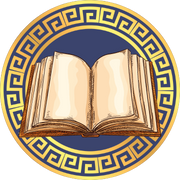How Horsemen Were Trained in the Medieval Era

What are Horsemen?
Horsemen, in simple terms, are military units mounted on horseback. They come in many different types, serving different purposes, some were common, and others, not so common.
How common they were depended on their available military technology and advancements of the time. Of course culture and faith is a factor to consider as well.
How Were Horsemen Trained in the Medieval Era?
Yes, horse riding is a skill all horsemen must master (especially while wearing armor), but the specific training they received depends on the type of horsemen the army was trying to cultivate.
Types of Horsemen
Knights

When you hear the term "horsemen", knights might not be the first unit that comes to mind. However, since they were heavily trained in mounted combat and relied on their horses for mobility and effectiveness in battle, they are, technically speaking, considered horsemen.
Knights were considered to be elite warriors of the medieval period. The great majority of them began their training in childhood and were often drawn from the noble class.
As you might assume or already know, Knights in one kingdom and another can be quite different due to the difference in culture and/or faith.The availability of resources, such as land, materials, and technology, also played a significant role in shaping their training and equipment.
These Knights often act as prestigious guardsmen of Lords and Ladies. They are also expected to defend the realm when it is harmed.
Though knights from different places varied in their training and traditions, they most likely followed a similar timeline in becoming knights, which is:
Around the Age of 7
From around the age of 7, young boys, usually from noble families, aspiring to be knights (or forced to), would begin their training as what were called "pages" in a lord's household.
This stage involved learning: basic manners, the chivalric code, horsemanship (of course), and some rudimentary combat training.
They also learned to read and write, which was important for their future duties as part of the nobility.
Summary: Young aspiring knights, also called "pages" at the time, performed chores and duties such as serving meals, cleaning weapons and armor, and attending to knights — essentially learning through observation and assistance.
What they learn at this stage:
- Learning the Chivalric Code and Religious Teachings
- Basic Horse Riding Skills
- Basic Weapon Handling (wooden weapons)
- Weapon and Armor Maintenance
Age 14 to 21
At this stage, pages became squires, and their roles and duties became more hands-on. They directly assisted knights by caring for their armor and horses.
A squire might also accompany a knight into battle, serving as his assistant.
In this stage is also where advance training in swordsmanship, archery, jousting, and other martial skills is included.
Mastery of various weapons was also part of the regime since every knight was expected to be a jack-of-all-trades in combat, able to use a range of weapons, fight on foot or horseback.
What they learn at this stage:
- Riding While Armored
- Mastery of Various Weapons (starting with wooden versions, progressing to steel)
- Basic Weapon Handling (wooden weapons)
- Formation and Battlefield Tactics
- Independent Weapon and Armor Maintenance
- Further Chivalric and Religious Education
Around Age 21
At around the age of 21, when deemed ready, a squire could be knighted and become a full-fledged knight.
Once knighted, their responsibilities shifted from learning and serving to:
- Active military service
- Managing land and estates
- Providing protection to their lord's domain
- Upholding the code of chivalry
- Fulfilling various courtly duties such as advising nobles, attending ceremonies, and representing their liege in diplomatic matters
Cataphracts

Cataphracts were heavily armored cavalrymen from ancient and medieval times, especially in the Byzantine and Persian Empires. Both the riders and their horses were fully armored, making them tankier but less mobile than lighter cavalry.
They are basically the medieval version of the modern tank. Strong, powerful, hardy units.
Unlike knights, these units were trained less for individual combat and more for formation-based warfare with the goal of breaking through enemy lines with overwhelming force.
Another thing to note is the fact that they were typically drawn from noble or elite social classes due to the high cost of their armor and horses.
How they trained:
- Riding While Armored: Depending on the time-frame, knights were trained either to ride effectively while wearing plate armor or chainmail. (Something to note is that the armor of the knight's horses varies between heavy and lightly-armored)
- Mastery of Various Weapons: Knights practiced daily with a variety of weapons, including swords, lances, maces, and axes, starting with wooden weapons and progressing to real ones as their skill increased.
- Training their Accuracy and Coordination: They trained on devices like the quintain, a rotating target, to improve their precision and coordination, while also sparring with others to simulate real combat scenarios.
- Weapon and Armor Maintenance: Knights were taught how to maintain and repair their weapons and armor, ensuring that their gear was always in top condition and ready for combat.
- Battlefield Tactics: They studied tactics and formations to work efficiently with larger armies, learning how to respond to different battlefield scenarios and coordinate with fellow knights.
- Learning the Chivalric Code and Religious Teachings: Alongside martial training, knights were educated in the chivalric code, which emphasized virtues such as loyalty, honor, courage, and humility, along with religious teachings.
Skirmish Cavalry
Skirmish cavalry, the hit-and-run specialists, they played a key role in medieval warfare by harassing enemy forces, launching quick strikes, and avoiding prolonged engagements.
These cavalrymen relied on speed, agility, and ranged attacks to weaken opponents before heavier forces arrived.
Notable examples include:
Notable examples include:
- Jinetes – Iberian light cavalry skilled in javelin throwing and quick retreats.
- Stradiots – Balkan mercenary cavalry used for fast raids and ambush tactics.
How They Trained:
- Riding Skills: Skirmish cavalry were trained to maneuver quickly, make sharp turns, and retreat at high speeds, ensuring they could engage and disengage rapidly.
- Javelin Throwing and More: Training focused on javelin throwing, crossbow accuracy, and saber strikes, as these weapons allowed them to attack while remaining mobile.
- Scouting and Reconnaissance: These cavalrymen received extensive training in stealth, terrain navigation, and enemy observation to act as battlefield scouts.
- Hit-and-Run Tactics: They mastered feigned retreats, ambushes, and quick assaults to disrupt enemy formations without getting trapped in prolonged combat.
Mounted Archers
Mounted archers, were more common in medieval armies, especially in Eastern Europe and Asia.
These type of cavalrymen were trained in advanced horseback archery techniques, allowing them to fire arrows with deadly accuracy while moving at full speed.
Notable examples include:
- Mongol Horse Archers – Masters of mounted archery, known for their mobility and endurance.
- Parthian Horse Archers – Famous for the “Parthian Shot,” firing arrows while retreating.
- Tartar Cavalry – Nomadic warriors from Central Asia, similar to Mongols in their use of horse archery.
- Mounted Crossbowmen – Light cavalry equipped with crossbows, engaging in ranged attacks while staying mobile.
How They Trained:
- Riding Skills: Training emphasized absolute control over the horse, enabling archers to shoot accurately while galloping at full speed.
- Archery: Intensive practice in drawing, nocking, and firing arrows in quick succession while moving. Some, like the Mongols, could fire in all directions, including backward while retreating.
- Endurance and Stamina: Horse archers trained for long campaigns, practicing sustained riding for hours and learning how to care for multiple horses to avoid exhaustion.
- Tactical Maneuvers: They perfected the Parthian Shot (firing backward while retreating), circling enemies, and coordinated attacks to harass and disrupt formations.
Shock Light Cavalry
Unlike skirmishers and horse archers, these cavalrymen specialized in rapid melee combat. They relied on speed and agility to strike fast, break enemy morale, and chase down fleeing opponents.
Notable examples include:
- Hussars – Agile cavalry known for their aggressive charges and speed, particularly in Eastern Europe.
- Cossacks – Eastern European cavalry skilled in fast assaults, raids, and guerrilla warfare.
How They Trained:
- Riding Skills: They were trained to charge at high speeds, weave through enemy lines, and chase down routed troops efficiently.
- Weapon Handling: Hussars and Cossacks trained extensively with sabers, lances, etc., ensuring they could strike with precision at full speed.
- Flanking and Pursuit Tactics: They mastered flanking maneuvers, rapid repositioning, and pursuit strategies to overwhelm slower-moving enemy units.
Copyright ©2025 by Marshall Vulta
Last revised: April 7, 2025




Comments ()